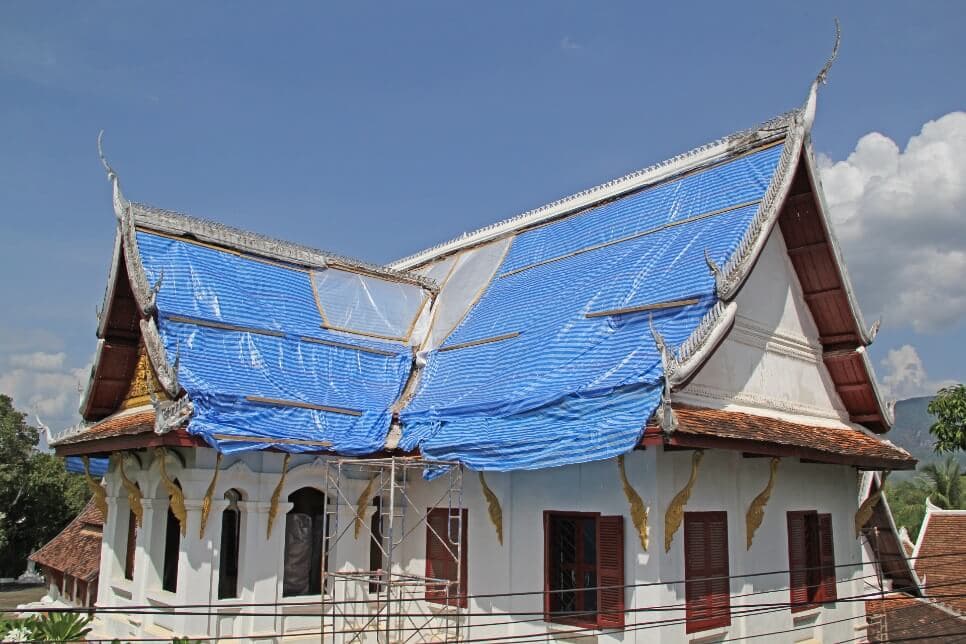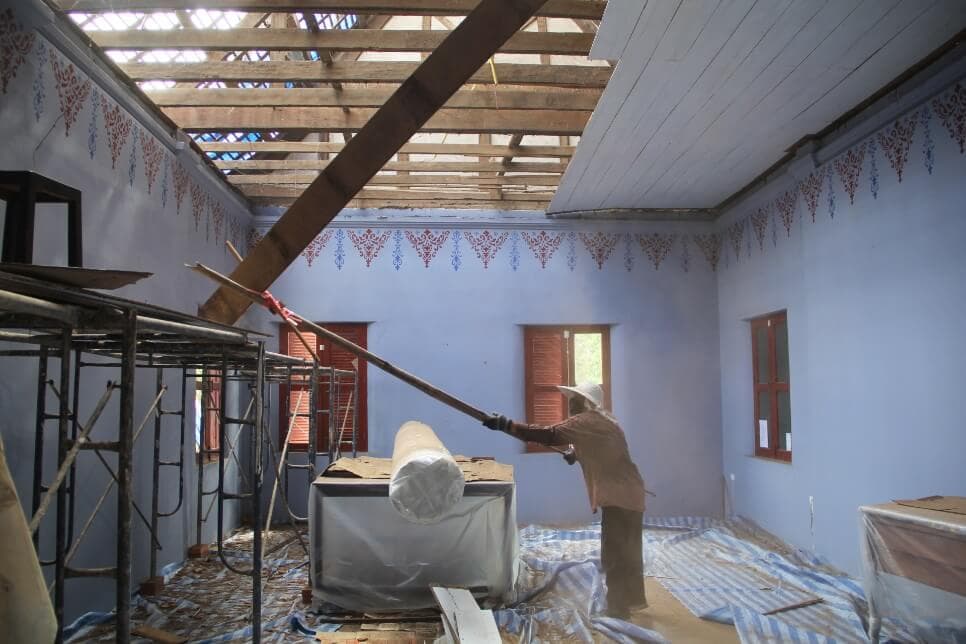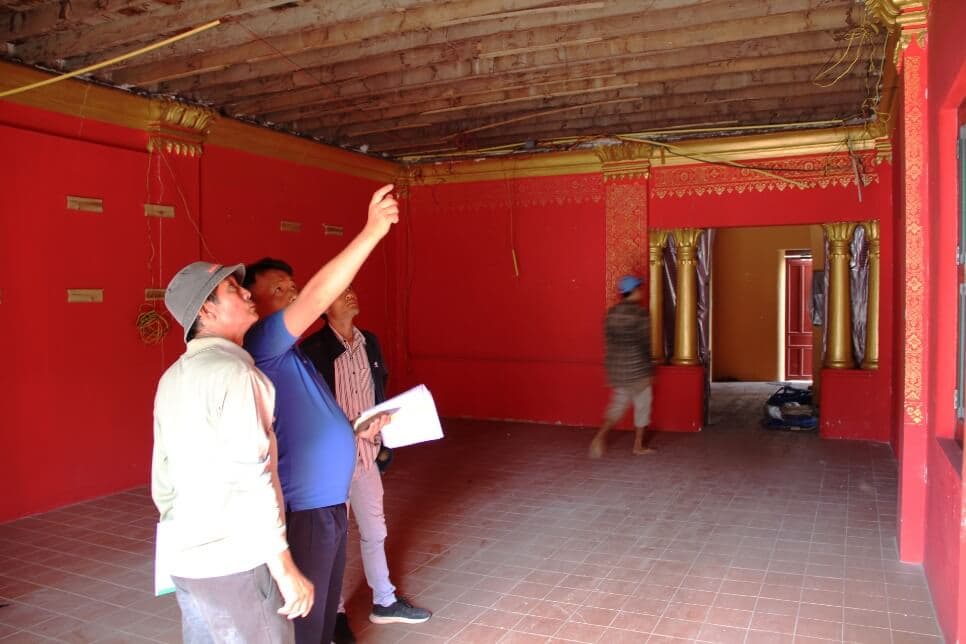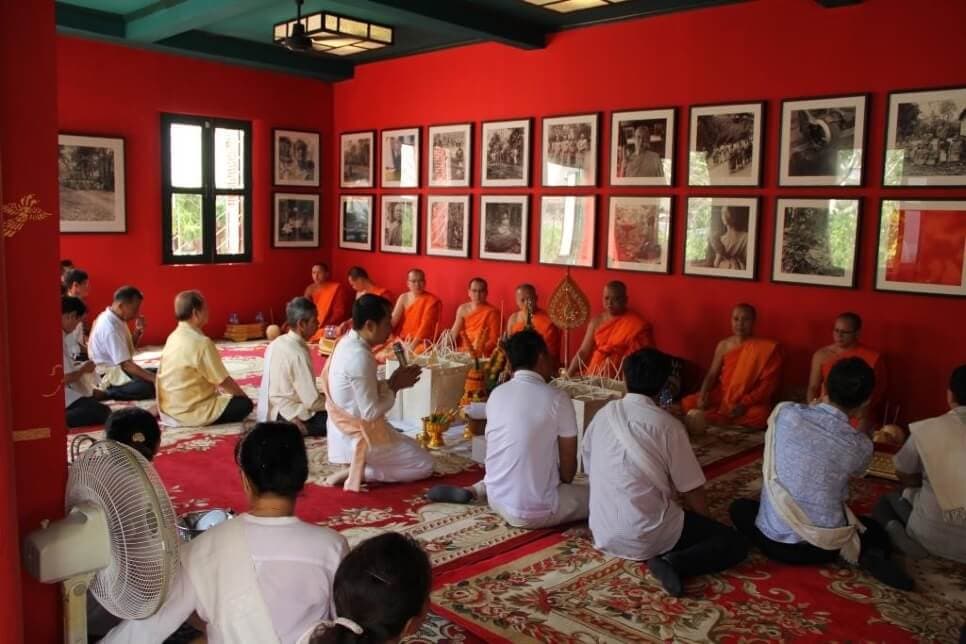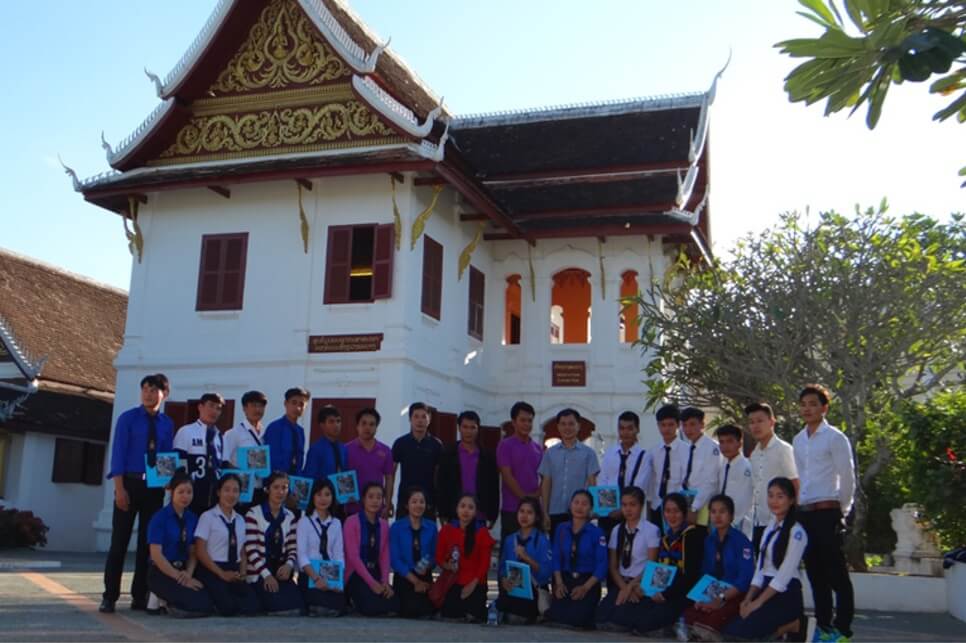The Buddhist Archives Building at Vat Khily preserves a collection of almost 40,000 historic photographs that had been carefully hidden by the Monks in order to protect them from the civil wars and ultimate revolution in 1975. It is the most important collection of photography in Laos. With support from the Foundation, the Buddhist Heritage Project will carry out urgent structural and roof repairs to ensure this significant building will survive well into the future.
In recent years, the Archive collection has expanded to include diaries, correspondence, notes and commentaries from hundreds of sources, and a large number of historic palm leaf manuscripts. The collection is carefully stored under rigorous conditions in accordance with professional international museum standards. The building in which this important collection is housed is almost one hundred years old, and is a structure firmly covered by the rules of the UNESCO World Heritage Office of Luang Prabang. The building and some of the surrounds of the temple were restored thanks to a previous grant from the Badur Foundation in 2013 and 2014.
Since the initial restoration there have been a series of natural “events”, which collectively, have caused significant cracks going right through the 60 cm thick wall: Earth tremors stemming from earthquakes in neighbouring provinces, as well as severe localised thunderstorms, plus the gradual collapse of the left bank of the Nam Khan river, which has caused a number of the houses along that side of the river to subside. It also became apparent that the roof tiles on the building need replacing. A structural engineer calculated the fixed load of the roof tiles, plus the load of the interior Archival furnishings and materials. The roof tiles weigh more than 20,000 kg and the interior load is not much less.
To repair the building, the Buddhist Heritage Project worked with local engineers and builders to create steel reinforced concrete ‘beams’ that were inserted horizontally into the exterior of the ground floor walls of the building at strategic points on all sides. The beams will take on the burden of support as if they had been installed during the original construction. The second course of action was to provide significant structural support under the floor of the second level, the floor that holds the bulk of the weight of the collections and the cabinetry. Once in place, the new support was plastered over and is no longer visible to maintain the aesthetics of the building. The final stage was to replace the roof tiles with approved cement versions of the traditional clay tiles, which should last decades rather than years.
These major engineering interventions aim to provide all the support necessary for the building to survive for many years to come.
